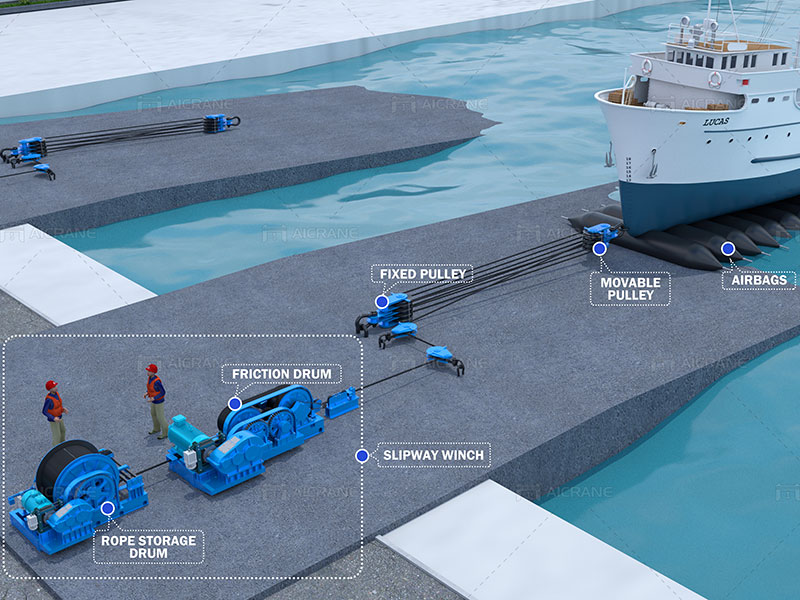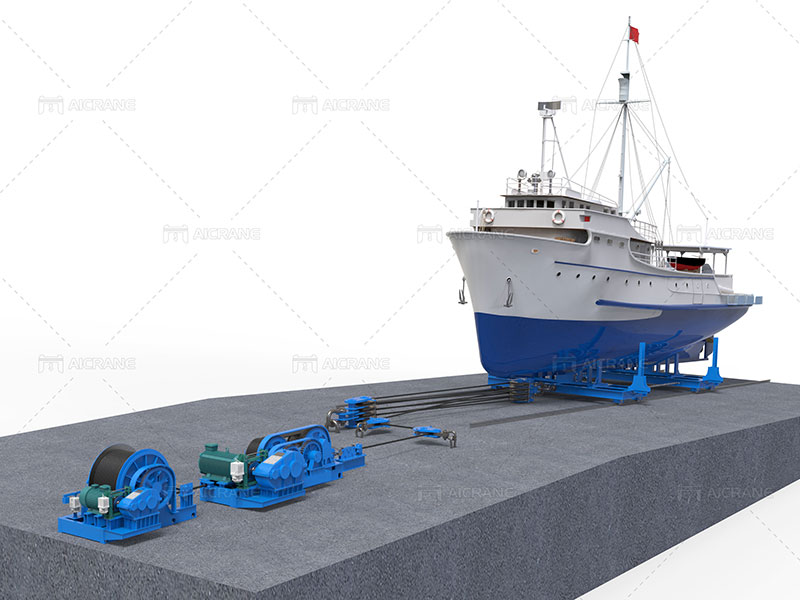Slipway winches are essential equipment in shipyards, enabling the safe and efficient launching and hauling of vessels. These powerful winches play a critical role in supporting shipyard operations and require careful handling to ensure both the safety of personnel and the preservation of valuable assets. In this article, we will provide a comprehensive guide on how to use slipway winches effectively in shipyards.
Preparing for Slipway Winch Operation:
Before initiating boat slipway winch operations, it is essential to perform a thorough assessment of the slipway area. Start by ensuring that the slipway surface is clear of obstacles, debris, or any potential hazards. Any potential obstructions must be removed to provide a clear and safe path for the vessel. Additionally, verify that the winch and all associated equipment, such as wire ropes or chains, are in proper working condition. Check for any signs of wear, damage, or corrosion, and replace or repair as necessary. It is vital to confirm that all safety measures, such as emergency stop buttons and safety barriers, are in place and fully functional to ensure a secure working environment.

Rigging and Connecting:
Proper rigging and connection of the vessel to the slipway winch are crucial for a successful operation. Begin by inspecting and selecting the appropriate rigging equipment, such as shackles, chains, or slings, based on the vessel’s weight and dimensions. Ensure that the rigging equipment is in good condition and has the appropriate load capacity to handle the vessel’s weight.
When connecting the rigging equipment, take care to secure it to both the vessel and the marine winch with the utmost precision. Confirm that the attachment points on the vessel are strong and reliable. Distribute the load evenly across the rigging equipment to maintain balance and prevent undue stress on any single point. This step is crucial for ensuring a safe and controlled movement during the winching process.
Winch Operation and Control:
Before operating the slipway winch, familiarize yourself with the control panel and understand the functions of each control mechanism. Take note of the various switches, buttons, and levers and ensure that they are labeled clearly and legibly. Check that all control mechanisms are in proper working condition before initiating winch operations.
When operating the winch, it is crucial to maintain smooth and controlled movements. Avoid sudden jerks or rapid acceleration that could endanger personnel or damage the vessel. Utilize the winch controls to adjust speed and direction carefully, taking into account the vessel’s weight, size, and the prevailing conditions. It is recommended to start with a slow and steady winching speed, gradually increasing it as required while constantly monitoring the operation.

Safety Measures and Personnel Awareness:
Safety should always be the top priority when using slipway winches. Ensure that all personnel involved in the operation are familiar with emergency procedures and have received appropriate safety training. Establish clear communication channels between the winch operator and the crew members responsible for overseeing the vessel’s movement during the launch or haul.
Implement and enforce safety protocols, such as wearing appropriate personal protective equipment (PPE) including helmets, safety goggles, gloves, and sturdy footwear. Create exclusion zones around the slipway area to prevent unauthorized access and ensure the safety of both workers and bystanders. Regularly inspect and maintain safety equipment, including emergency stop switches and safety barriers, to ensure they are in good working order.
Post-Operation Maintenance and Inspection:
After completing slipway winch operations, it is crucial to conduct a thorough post-operation inspection. Inspect the winch machine and all associated equipment for any signs of wear, damage, or malfunction. Remove any debris or accumulated dirt from the winch and ensure that it is properly lubricated according to the manufacturer’s guidelines. Conduct routine maintenance and servicing as recommended by the manufacturer to ensure the winch remains in optimal working condition.
Conclusion:
Effectively using slipway winches in shipyard operations requires careful planning, proper equipment inspection and connection, adherence to safety measures, and diligent post-operation maintenance. By following this comprehensive guide, shipyard personnel can enhance safety, efficiency, and the overall success of launching and hauling vessels. Remember that continuous training, regular inspections, and a commitment to safety are key to ensuring the smooth operation of slipway winches in shipyards.